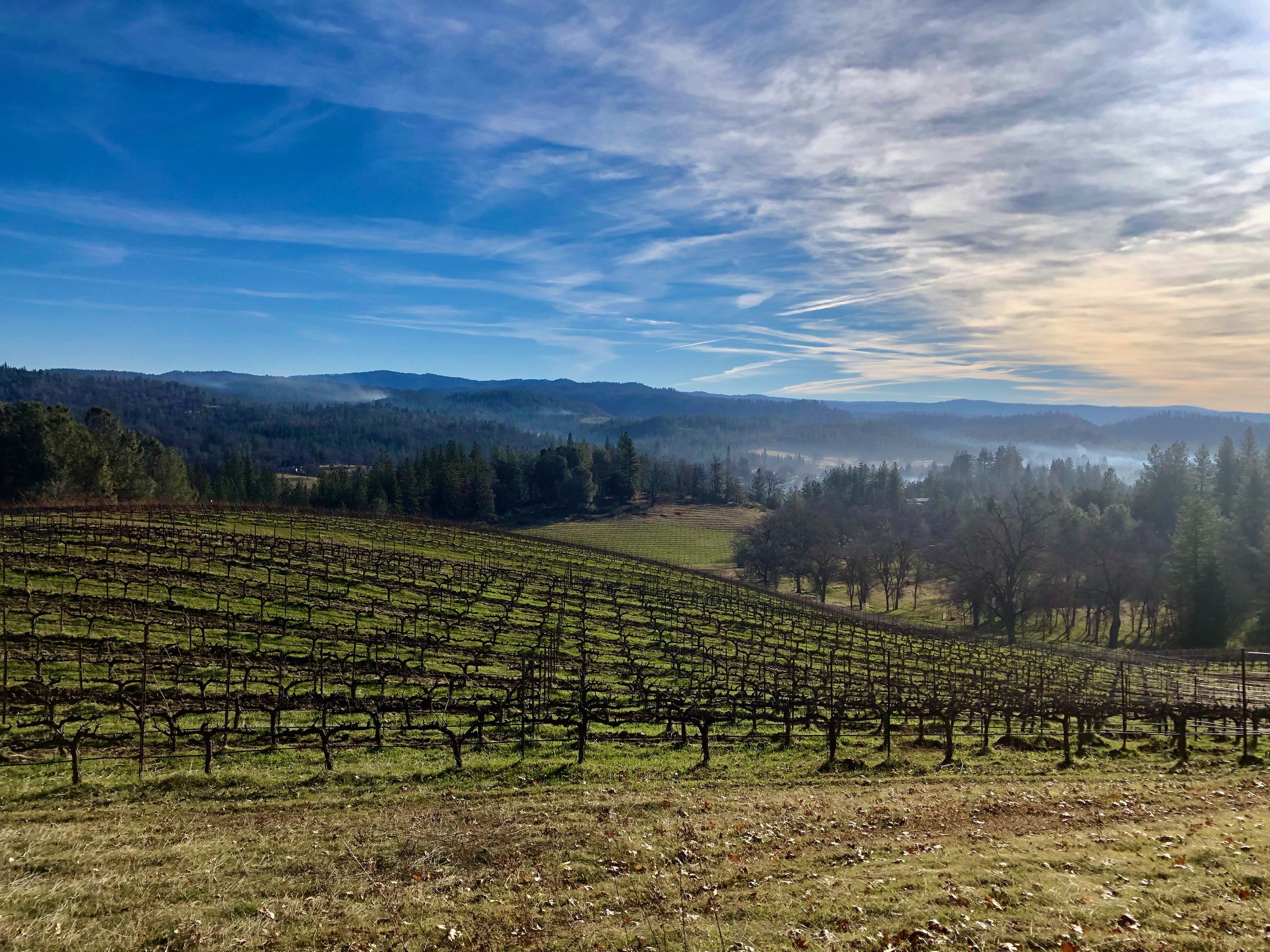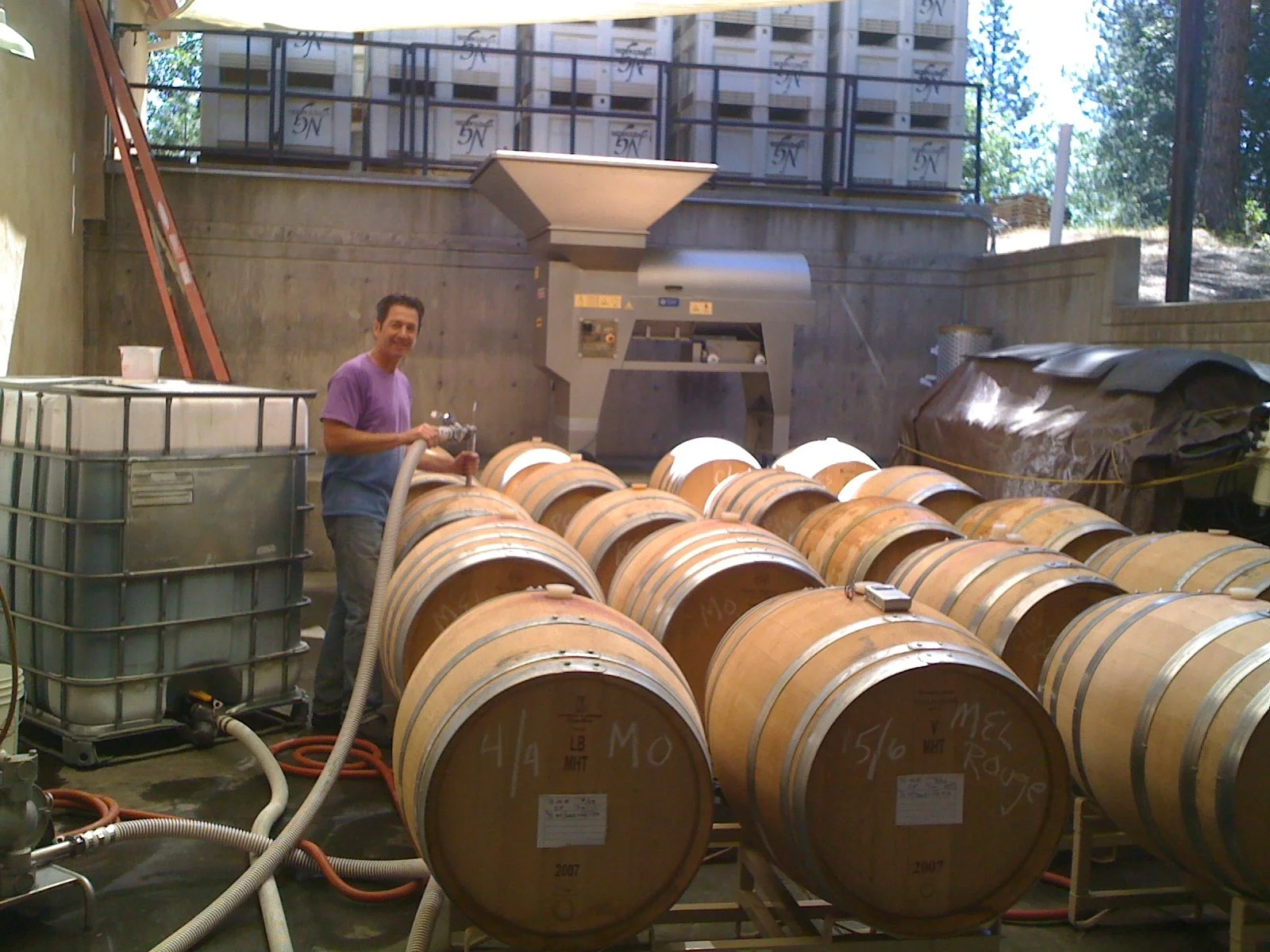
Process
Vineyard & Winemaking Practices
Biodynamic Farming
The 14 acre estate vineyards, situated within the 86 acre farm located in the Pleasant Valley Agricultural District in the El Dorado AVA, employ a regenerative organic farming system that focuses on soil health, the integration of plants, animals and biodiversity.
There is no use of chemicals, herbicides, or pesticides. Frank makes his own fertilizer from composted skins, seeds, stems, cow manure, ground quartz rock and plant life used in making biodynamic preparations and teas.
Continued…
Demeter Certified Biodynamic since 2010, they began practicing organic farming in 2007.
Living and working on the land, both Frank and Teena felt a personal conviction early on to adopt this farming method which has increased the grape’s vitality, nurtured the soils, protected their own health and enabled them to steward the farm well.
Additionally, Narrow Gate wines are genuinely “hand made” with very little intervention by technology.
Wine-making
At Narrow Gate Vineyards, winemaking is integrally connected to winegrowing. It’s no wonder winemaker Frank Hildebrand is also the viticulturist and believes the best way for his biodynamic farm to positively express itself is to take a minimalistic approach to the winemaking, resulting in wines with true varietal character, flavor expression and individual style unique to each wine.
Depending on the vintage year and the weather’s influence on the ripening process he’ll choose to pick specific sections within the vineyard blocks in up to two or, sometimes, three stages. This allows him to manage the grape’s sugars and acids in such a way that very little, if any, adjustments are necessary prior to fermentation.
The Process
Once the grapes arrive to the winery he de-stems the reds with little to no crushing while employing whole cluster pressing on the whites. Leaving the red berries whole enables whole-berry fermentation – the process of fermentation that begins inside the grape. This process, where the influence of bitter skin and seed tannins are minimized, results in wines that are softer, with a more delicate extraction of flavors and fruiter notes, while still preserving the wine’s overall structure.
Continued…
When appropriate, Hildebrand will utilize native yeast. He bases this decision, to ferment on indigenous (native) yeast versus commercial yeast, on several factors, chief among them are temperature, nutrient levels and PH as he doesn’t utilize warming or chilling equipment to adjust temperature once fermentation begins. All red grapes are fermented in half-ton bins with two hand-punch downs daily. During fermentation each bin is protected by a fabric cover to shield the fermenting must from fruit flies and any other surprise intruders.
White wines are gently moved from press to barrel for fermentation and allowed to age “sur lie” in barrel – post fermentation, with monthly topping – for five to six months until bottling. Red wines finish fermentation in French or American oak barrels where, depending on the wine, the barrels are racked three times during their eleven to eighteen months cellar time before bottling. White wines are released six months to two years after vintage date and red wines continue to age in the cellar, up to two to four years in some cases, before release.
Questions?
Wise answers from the wine maker, Frank Hildebrand
-
Biodynamic (also known as BD) is a farming method that strives to create a diversified, balanced farm ecosystem that enhances the farms fertility and health from within the farm itself to the greatest practical extent.
-
There are 3 clear distinctions:
BD requires a healthy integration of crops and livestock on the farm.
BD requires a certain amount of wild and/or uncultivated land set aside to enhance the farm’s biodiversity.
Organic certification can be applied to just one isolated part of the farm whereas BD certification requires the entire farm to be certified.
-
When we moved to this land and began farming, our family embraced the entire farm as our backyard. We wanted to make the farm safe not just for our family but also for all of the wild animals living within it. Biodynamics doesn’t only insure we are farming responsibly and safely, but it also enriches our farms vitality and fertility for generations to come.
-
Biodynamics is more about being a farmer than a winemaker. The better job we do as farmers in the vineyard, the better quality of grapes we deliver to the winery. That makes the job of winemaking not only easier, but we make a more natural, healthy and better product in the end.
-
The cow horn is used in 2 field spray preparations. The first is BD 500 which is cow manure packed inside the horn and buried underground through winter and dug up in spring. The horn contents is stirred in water and sprayed over the entire vineyard to stimulate soil micro-life and increase beneficial bacteria. The second is BD 501 which is ground up quartz rock into a fine powder (rich in silica) and packed in the cow horn and buried underground through the entire summer. It is dug up in autumn. It is stirred in water and sprayed as a mist over the tops of the vines in spring and fall to enhance light metabolism and stimulate photosynthesis and the formation of chlorophyll.










